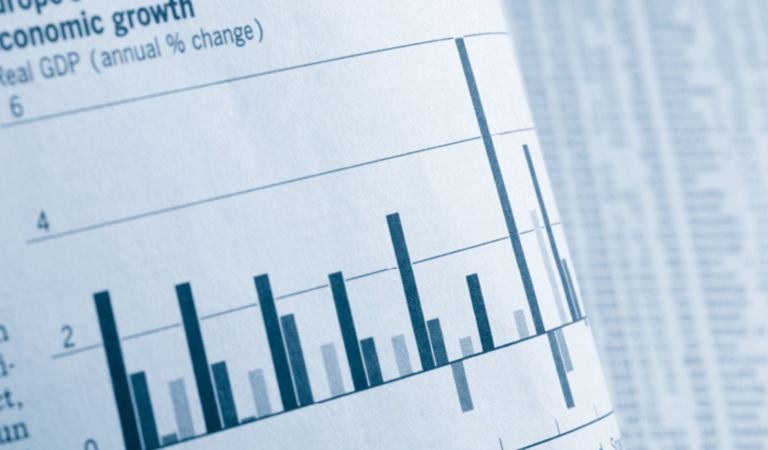Equities
Global equities (+2.6%) rose in June, ending the month with a 13.5% gain year to date. The global landscape was marked by disparities in inflation and economic growth across countries, which continued to drive a divergence in interest-rate expectations and policy decisions among central banks. Mixed signals from the US Federal Reserve (Fed) heightened uncertainty around the timing and frequency of rate cuts amid a backdrop of moderating inflation and softer economic indicators. The European Central Bank (ECB) began easing policy rates, but indicated a patient, data-dependent approach to future cuts and upward revisions to inflation projections in 2024 and 2025. The Bank of Japan (BOJ) left interest rates unchanged and signaled plans to significantly reduce bond purchases. French President Emmanuel Macron unexpectedly dissolved the National Assembly, igniting a two-round snap election. The country’s National Rally party won the first round of voting, although the outcome of the elections remains uncertain. In China, soft activity data suggested the economic recovery decelerated ahead of the highly anticipated Third Plenum meeting in July. Indian Prime Minister Narendra Modi won a third consecutive term, but his Bharatiya Janata Party surprisingly failed to win an outright majority in parliament, creating uncertainty about the government’s economic agenda.
US
US equities (+3.6) registered their fifth monthly gain of 2024. Market breadth remained very narrow as a select group of mega-cap technology companies continued to propel the market higher. For the second consecutive month, the market-cap-weighted S&P 500 Index significantly outperformed the equal-weighted S&P 500 Index, and the performance of growth stocks markedly exceeded their value counterparts. Financial markets and the Fed were encouraged by decelerating inflation, as the core Personal Consumption Expenditures Price Index dipped to 2.6% year over year in May, from 2.8% in April, in line with expectations and the lowest level since 2021. The Fed’s median dot-plot projection showed that policymakers expect only one 25 basis points (bps) reduction in interest rates in 2024, down from three cuts projected in March, although a majority of economists anticipate two cuts starting in September. According to FactSet, first-quarter earnings for companies in the S&P 500 Index grew 5.9% year over year, driven by the robust earnings of the Magnificent 7 companies. Analysts in aggregate forecast earnings for the index to grow by 8.8% year over year in the second quarter and by 11.3% in 2024. President Joe Biden vowed to continue his campaign for a second term in office despite his poor performance in the first presidential debate fueling concerns about his candidacy.
Economic data released during the month highlighted headwinds to the US economy from elevated borrowing costs and lingering inflation. Labor market indicators were mixed and continued to gradually moderate from still-healthy levels, primarily through toned-down hiring and fewer job openings rather than widespread layoffs. Job openings in April fell to their lowest level in over three years. In June, initial jobless claims increased modestly, and continuing jobless claims were the highest since 2021. In May, average hourly earnings rose 0.4% (4.1% annually), exceeding expectations, and headline nonfarm payrolls increased more than expected, by 272,000, in a significant deviation from the household survey, which showed a 408,000 decline in the number of jobs. Unemployment ticked slightly higher to 4.0%. Consumer spending was subdued; headline retail sales rose only 0.1% in May after a decline of 0.2% in April, and personal spending advanced just 0.2% despite a healthy 0.5% increase in personal income due to the still-solid labor market. Consumer confidence remained muted as the Conference Board’s Consumer Confidence Index eased to 100.4 in June on a more sober outlook for business conditions, the job market, and incomes. The housing market struggled against elevated interest rates and record-high home prices. Pending, new-, and existing-home sales slumped in May, while home construction was the weakest in four years.
The manufacturing sector contracted for the third consecutive month, as the Institute of Supply Management (ISM) Manufacturing Index slipped slightly to 48.5 in June amid lackluster demand. In May, the services sector expanded by the most in nine months; the ISM Services Index rose to 53.8, from 49.4, propelled by the largest monthly gain in business activity since 2021 and a gain in new orders. Employment improved but remained in contractionary territory, and businesses increasingly highlighted headwinds from stubborn inflation and elevated financing costs. The National Federation of Independent Businesses (NFIB) Small Business Optimism Index registered a modest gain from a historically depressed level, although sentiment is not anticipated to meaningfully change until the presidential election provides more clarity on government policy.
Within the S&P 500 Index (+3.6%), 5 of the 11 sectors posted positive results for the period. Information technology (+9.3%) was the best-performing sector aided by semiconductors & semiconductor equipment (+9.9%) and software (+9.8%). Consumer discretionary (+4.9%) and communication services (+4.8%) also outperformed. Utilities (-5.5%) was the worst-performing sector, while materials (-3.0%) and energy (-1.3%) also underperformed.
Europe
European equities (-1.4%) declined in June as political turmoil in France rattled risk assets. The eurozone’s economic recovery slowed sharply, as the HCOB Flash Eurozone Composite PMI fell to 50.8 in June, from 52.2, significantly below market expectations of 52.5. However, the latest reading still signaled a fourth consecutive monthly increase in business activity, suggesting that GDP will continue to expand modestly in the second quarter. Against a better economic backdrop, the ECB lowered interest rates for the first time since September 2019 but signaled concerns about strong inflation pressures from elevated wage growth. The Swiss National Bank reduced rates for the second consecutive meeting after revising down its inflation forecast, while the central banks of Sweden, Norway, and the UK left policy unchanged. Eurozone headline inflation slowed to 2.5% in June, while core inflation remained stable at 2.9%. Persistently high services inflation of 4.1% matched the seven-month high reached in May and will likely dissuade the ECB from cutting interest rates in July. The European Union announced additional tariffs of up to 37.6% on imported Chinese electric vehicles, brushing aside German government warnings that the move could start a costly trade war with China. First-quarter earnings for companies in the STOXX 600 Index are forecast to decline by 3.3% from a year earlier.
Europe’s manufacturing sector weakened in June as the HCOB Eurozone Manufacturing Purchasing Managers’ Index (PMI) declined to 45.8, from a 14-month high of 47.3, in May. The contraction in output accelerated at the fastest pace of the year, but encouragingly, business confidence remained at a 27-month high, and output prices continued to wane. The HCOB Flash Eurozone Composite PMI revealed that services sector activity in June expanded for a fifth consecutive month, but the pace of growth was the softest since March. New orders rose to a 14-month high, and input costs and output prices continued to increase but at a slower pace. The European Commission’s Economic Sentiment Indicator edged down to 95.9 in June; consumer confidence improved marginally, while industry confidence was broadly stable.
In Germany (-0.5%), business conditions in the manufacturing sector weakened in June, as the rates of decline in output and new orders reaccelerated after the downward trend eased substantially in May. The ZEW Indicator of Economic Sentiment in June rose to its highest level since February 2022, but the assessment of the current economic situation deteriorated. In the UK (-1.0%), the economy expanded by 0.7% in the first quarter, above an initial estimate of 0.6%, helped by stronger household spending. The S&P Global Flash UK PMI Composite Output Index showed the sharpest rise in manufacturing production for over two years, while services sector growth slowed for the second straight month. In France (-6.3%), President Macron shocked markets by calling a snap parliamentary election after his centrist alliance was trounced by Marine Le Pen’s far-right movement in elections for the European Parliament, triggering a sell-off in French stocks and bonds. While the outcome of the French elections is uncertain, markets grew increasingly nervous about the country’s high level of public debt and large deficit, which make its public finances more vulnerable to political gridlock or divergence from centrist policies.
Pacific Basin
Pacific Basin equities (+1.1%) ended the month higher. In Australia (+1.6%), inflation continued to accelerate after the economy nearly stalled in the first three months of the year, as elevated interest rates and a high cost of living weighed heavily on households and economic activity broadly. First-quarter GDP grew only 0.1% (1.1% annually), below estimates and the weakest since 1992, excluding the pandemic. The Reserve Bank of Australia (RBA) maintained interest rates at 4.35% for a fifth straight meeting before it was reported that inflation accelerated faster than expected for a third straight month. In May, the CPI climbed 4.0% from a year earlier, above estimates of 3.8%, while a closely watched measure of core inflation (the trimmed mean) rose 4.4% — the highest in six months and up from 4.1% in April. Stubbornly high services prices remain a critical concern for the RBA, and June’s inflation reading will be a key determinant for the bank’s next policy-rate decision in August. Unemployment fell to 4.0% in May, from 4.1%, and job gains exceeded estimates, highlighting the resilience of the country’s labor market amid elevated interest rates and immigration.
Japan (+1.7%) faced a mixed economic backdrop, highlighted by accelerating inflation, a historically weak yen, and an economy that has yet to show clear signs of a recovery. First-quarter GDP shrank at a 1.8% annualized pace, less than the preliminary figure of 2.0%. GDP is widely anticipated to rebound in the second quarter, although lackluster consumption is a critical concern for the government and the BOJ, as authorities seek evidence that demand can withstand persistent inflation. Core CPI inflation, excluding fresh food, accelerated 2.5% in May from a year ago, up from 2.2% in April and slightly below consensus. A narrower measure that strips out the effect of fuel declined for the ninth straight month, to 2.1%, from 2.4%. This complicated the BOJ’s decision on how soon to raise interest rates and cast some doubt on its view that rising wages will boost consumption and keep inflation sustainably on track to hit 2.0%. Forward inflation expectations, measured by the 10-year breakeven rate, rose to the highest level since 2004 as the tumbling yen drove import prices higher, strengthening the case for an interest-rate hike in the near future. The BOJ left rates unchanged and will introduce a plan in July to reduce its huge bond purchases but did not provide details. The yen subsequently fell to its weakest level since 1986, fanning speculation that authorities may soon be forced to support the currency again.
In Singapore (+1.1%), the CPI accelerated 3.1% year over year in May, from 2.7%, lifted by higher private transport costs. Core inflation remained unchanged at 3.1% for the third consecutive month, as lower energy and goods prices offset an increase in the cost of services. Employment growth continued to lose momentum, as total employment rose by 4,700 in the first quarter, down from an increase of 7,500 in the fourth quarter. Trade showed encouraging signs of a recovery; non-oil domestic exports in May fell only 0.1% compared to a year earlier, a significant improvement from a 9.6% drop in April.
Emerging Markets
Emerging markets (EM) equities (+4.3%) ended higher. Asia and Europe, the Middle East, and Africa (EMEA) increased, while Latin America declined.
In Asia (+4.9%), China’s (-1.9%) soft activity data suggested that the economic recovery decelerated. The beleaguered property sector continued to restrain the economy, fueling uncertainty whether recent government stimulus measures would stabilize the housing market. Home prices in May continued to fall at an accelerated pace, and home sales by value tumbled 30.5% in the first five months of 2024 compared with the same period last year. Lackluster consumption curbed inflation; the Consumer Price Index was steady in May, while producer prices declined at a slower pace. China’s top stock market regulator Wu Qing rolled out new measures to reform the Science and Technology Innovation Board (STAR) market, aiming to promote innovation and increase foreign investment. Taiwan (+12.1%) was driven sharply higher by stocks along the AI value chain. Interest rates were left unchanged, but the reserve requirement ratio was raised for the first time since September 2022 to slow credit inflows into the property market and bring down housing prices. Protests broke out after a controversial bill was passed that will give parliament more power to interrogate and investigate government officials and private individuals. In India (+6.9%), Prime Minister Modi won a third consecutive term in office, but his Bharatiya Janata Party unexpectedly lost its outright majority in parliament. Modi will now need to work with coalition partners to govern.
In EMEA (+3.6%), the war between Israel and Hamas raged on, and prospects for a ceasefire remained out of sight. Saudi Arabia (+2.1%) has raised more than US$54 billion this year for projects that reduce the economy’s reliance on oil. Funding came from increased debt, share sales of state-owned Aramco, and reduced US stock holdings. First-quarter GDP shrank 1.7% year over year as declining oil activity curtailed growth. In South Africa (+6.0%), President Cyril Ramaphosa’s African National Congress party lost its 30-year parliamentary majority in the national election and agreed on a coalition with the Democratic Alliance and a host of smaller parties. The United Arab Emirates (UAE) (+5.1%) advanced, with the World Bank projecting real GDP growth of 3.9% in 2024 and 4.1% in 2025. A rebound in crude oil prices benefited the UAE; however, the S&P Global UAE PMI showed that capacity constraints weighed on its non-oil business activity in May as output growth slowed by the most in 16 months.
In Latin America (-0.6%), Brazil (+1.9%) advanced despite President Luiz Inácio Lula da Silva’s reluctance to consider spending cuts to address a growing budget deficit, even as the government struggles to boost revenue. The central bank kept interest rates unchanged at 10.5%. In Mexico (-4.1%), stocks fell and the peso tumbled after Claudia Sheinbaum won the presidential election and the ruling Morena party secured a supermajority in Congress. Markets were rattled by the potential for diminishing checks and balances on presidential power and highly divisive constitutional reforms that are viewed as unfriendly to markets and that could prompt capital flight. In Chile (-2.8%), the central bank reduced interest rates by 25 bps, to 5.75%, marking the fourth consecutive cut. The bank signaled that rates would continue to fall.
Fixed Income
Most fixed income sectors underperformed duration-equivalent government bonds as spreads widened. Most sovereign yields declined fueled by lackluster economic indicators, which drove expectations for more accommodative global central banks.
US economic data was mixed. Consumer confidence dipped lower amid softening personal consumption data. The NFIB small business optimism index rose, with owners citing that inflation remained a core concern. Retail sales inched slightly higher but missed expectations, while the producer price index fell slightly due to lower energy costs. Labor market data was healthy, evidenced by strong payroll gains, a modest uptick in the unemployment rate, and relatively stable jobless claims. Durable and nondurable goods orders advanced as manufacturers navigated high interest rates and shifting consumer habits. The eurozone composite PMI receded as the manufacturing and services sectors were both weaker than anticipated. In Germany, higher inflation expectations curbed the rise in the ZEW Indicator of Economic Sentiment, and the ifo Business Climate Index unexpectedly declined amid persistent economic challenges. Core and headline inflation in the UK edged down relative to the same period last year. China’s weak domestic demand dampened industrial profits growth. Japan’s industrial production rose, with most industrial sectors reporting greater output. Higher services prices lifted Canada’s annualized inflation. Australian consumer spending was dragged down by high borrowing costs and inflation, weighing down annual economic growth in the first quarter.
Major central banks’ policy paths diverged over the month. The US Fed held rates steady and signaled a reduced likelihood for substantial cuts in the absence of a recession. The Swiss National Bank and the ECB cut rates, while the Bank of England (BOE) kept policy unchanged ahead of the general election in July. The Norges Bank held rates at their current level but signaled a hawkish tilt by removing expectations for a cut later this year amid continued resilience in the economy.
Most global sovereign bond yields moved lower as softer economic data spurred more dovish central bank policy expectations. In Europe, bond yields fell broadly as business growth decelerated sharply and demand fell for the first time since February, despite concerns about the French election. UK gilt yields drifted lower after inflation fell to the BOE’s target for the first time since 2021. Japanese government bond yields also declined amid the BOJ’s decision to wait until its July meeting before revealing details on its plan to reduce bond buying. In EM, central banks’ easing cycle appeared to stall. The Fed’s decision to hold off on cutting rates put pressure on Latin American countries like Brazil and Mexico to slow or halt rate cuts. The Bloomberg TIPS index delivered a total return of 0.78%, and the 10-year breakeven inflation rate decreased by 6 bps, to 2.29%, during the month.
Global credit underperformed duration-equivalent government bonds as spreads widened. Within the securitized sectors, agency mortgage-backed securities outperformed, while commercial mortgage-backed and asset-backed securities underperformed duration-equivalent government bonds. Within EM, local markets debt (-1.08%) underperformed external debt (+0.62%), in USD terms. Spread widening detracted from external debt performance, while a decrease in US Treasury yields had a positive impact. EM currencies depreciation drove the negative performance within local markets, while movement in EM rates benefited results.
Currencies
The US dollar appreciated versus most major currencies driven by investors’ elevated risk-off sentiment amid soft economic data and concerns about fiscal deficits spurred by France’s snap election. Among the G10, the Japanese yen, Norwegian krona, and the euro were notable underperformers. The yen was weighed down by the market’s fading confidence in the BOJ’s commitment to tightening policy. The euro weakened on an uncertain near-term outlook ahead of European elections. The US dollar’s resurgence sent most EM currencies into a tailspin, with Latin American currencies leading the declines, particularly the Mexican peso. Asian currencies also slumped to their weakest levels since 2022 amid the prospect that US rates may stay higher for longer.
Commodities
Commodities (+1.4%) rose in June. Energy drove the increase as precious metals, agriculture & livestock, and industrial metals posted negative returns.
Within energy (+5.8%), gas oil (+7.0%), crude oil (+6.3%), heating oil (+6.1%), and gasoline (+4.5%) rose on the back of intensifying tensions between Israel and the Iran-backed Hezbollah militia, stronger-than-anticipated hurricane activity in the Atlantic, robust summer driving demand, and OPEC+ production cuts that extend into the third quarter of 2024. Natural gas (-1.5%) retracted as production strengthened and the Mountain Valley Pipeline received final approvals for commercial operations. The US Energy Information Administration also observed that natural gas inventories were trending above their five-year seasonal average.
The industrial metals (-5.1%) complex posted negative returns. Nickel (-12.5%), aluminum (-5.3%), copper (-4.5%), lead (-2.3%), and zinc (-1.6%) faced downward pressure amid oversupply concerns, weaker demand, and disappointing economic data in China.
Precious metals (-0.2%) ended modestly lower. Silver (-3.5%) prices struggled as the US dollar remained strong and interest rates remained elevated, while gold (+0.2%) held its ground as a slowdown in consumer spending and a potential interest-rate cut later this year buoyed prices.
Agriculture & livestock (-4.7%) ended lower. Wheat (-18.0%) prices slid due to a healthy acceleration in the US crop harvest, while rains in Russia and the US grain belts also mitigated production concerns. Cocoa (-10.5%) prices fell due to an improved production outlook in the Côte d’Ivoire and early signs that consumer price sensitivity may weigh on the demand outlook. Corn (-9.2%) prices ended lower as the United States Department of Agriculture reported higher-than-expected corn acreage estimates. Excessively dry weather in Vietnam and Brazil adversely affected coffee (+2.2%) production. Live cattle (+4.3%) prices were supported by strong wholesale beef prices, while supplies remained tight. Sugar (+11.6%) prices surged on speculation that rallying crude oil prices might prompt global sugar mills to divert cane crushing toward ethanol production, potentially tightening the sugar supply.




























Monthly Market Review — October 2025
A monthly update on equity, fixed income, currency, and commodity markets.
By